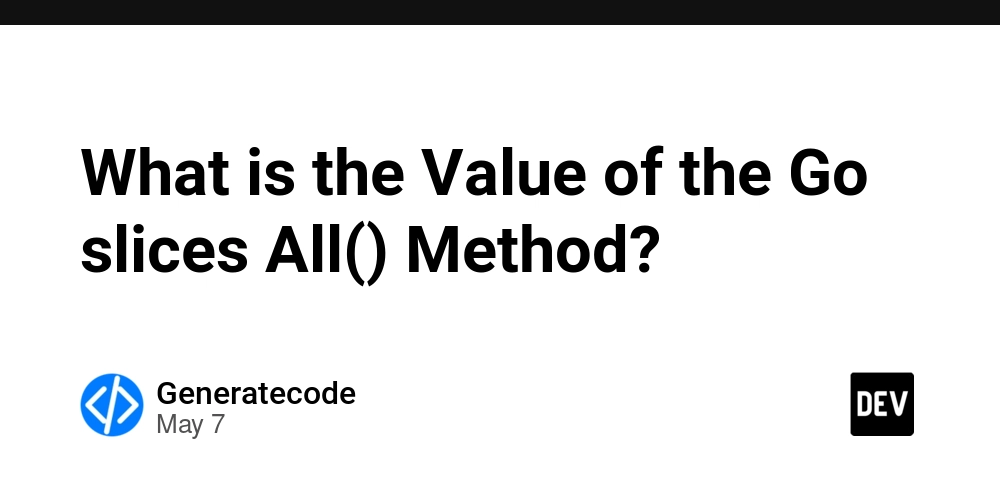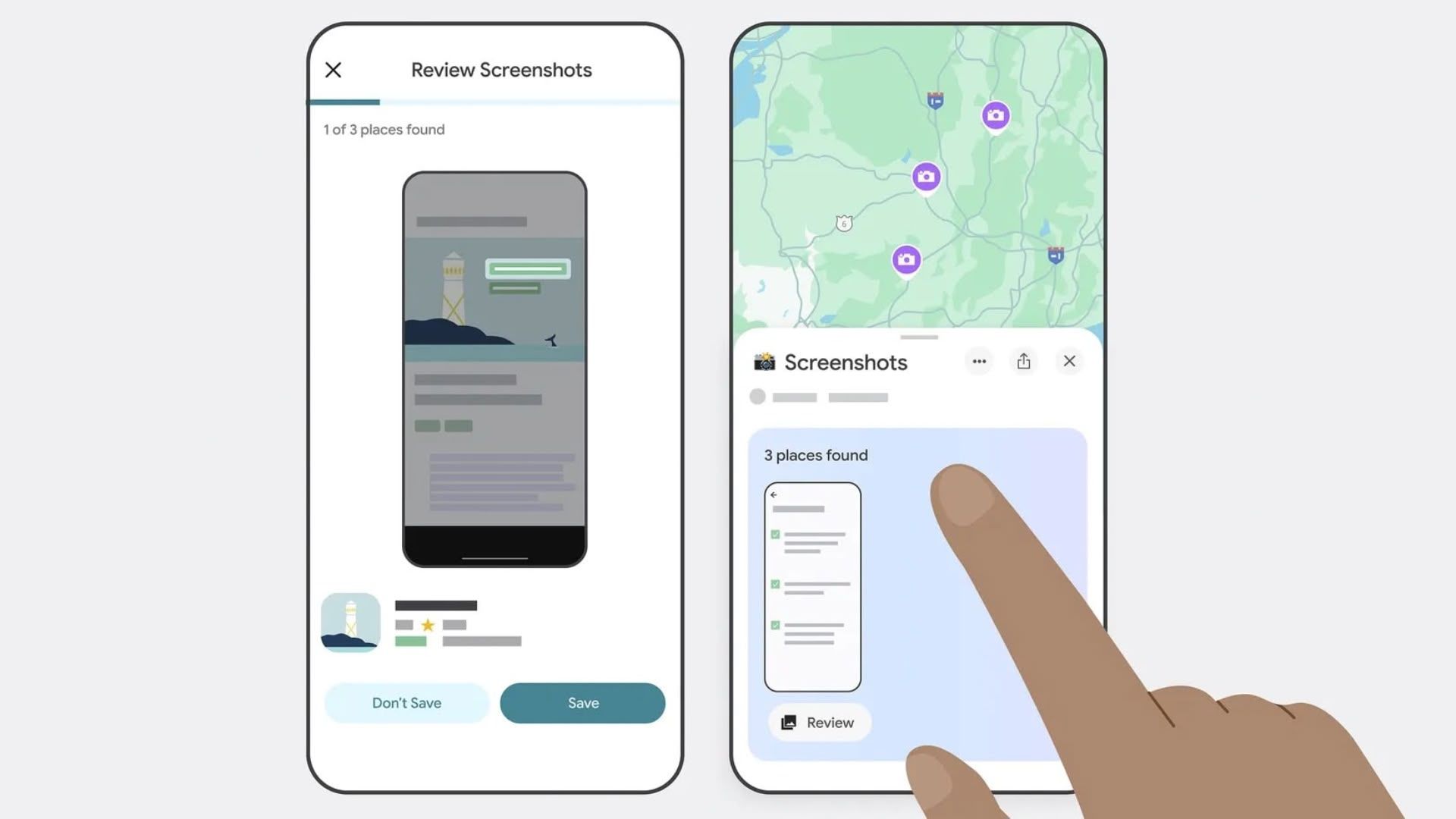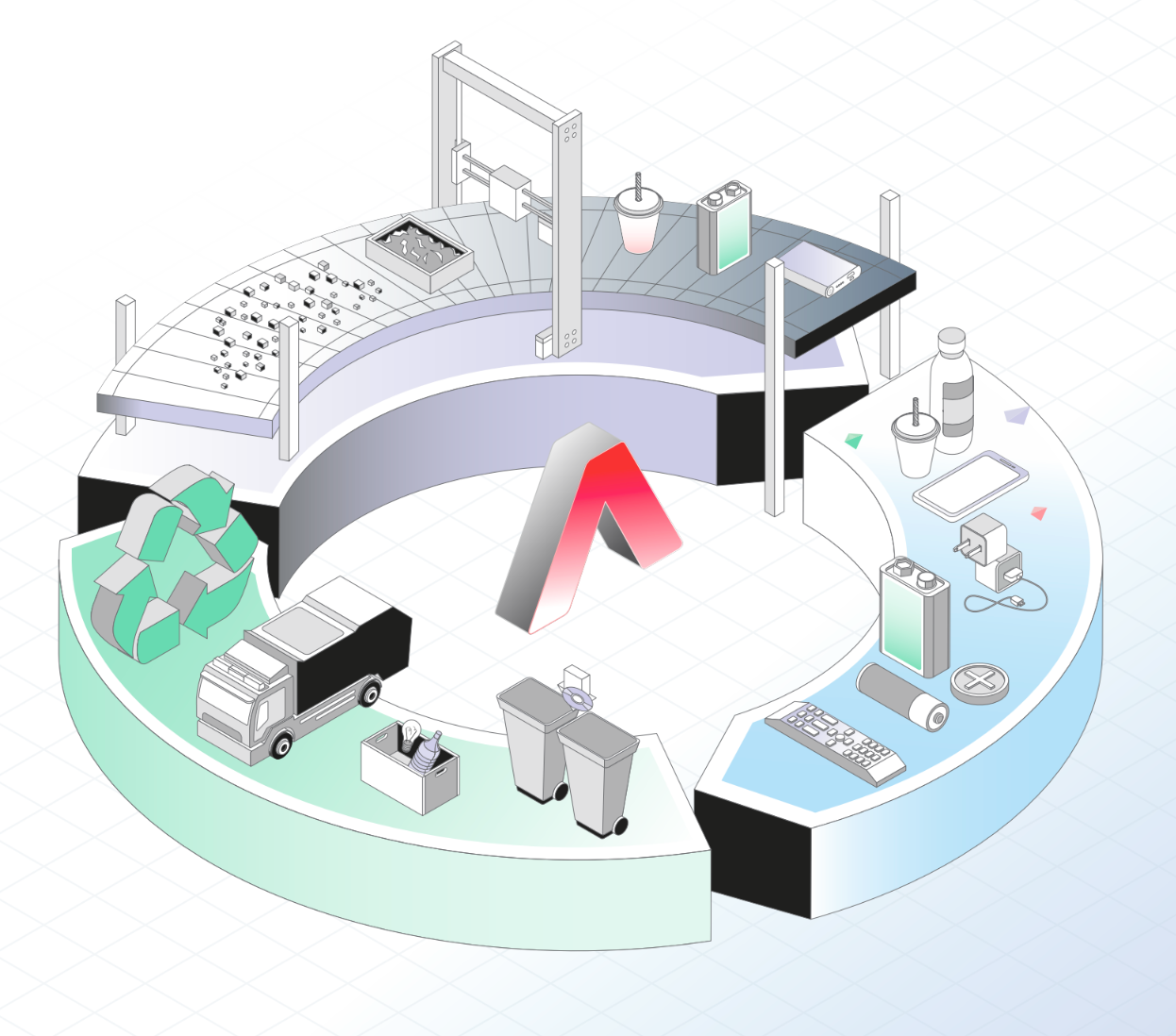What is the Value of the Go slices All() Method?
Introduction to Go's Slices and All() Method Go is a powerful programming language that emphasizes simplicity and efficiency. The Go slices package offers a variety of helpful methods, one of which is All(). If you have explored the Go Tour or the Go documentation, you may have come across examples that illustrate its usage. However, some developers question the added value of the All() method, especially when compared to basic for loops. In this article, we'll delve into the functionality of the All() method in Go, exploring its purpose and evaluating its usefulness through practical examples. We'll also tackle whether there could be more effective scenarios to showcase its utility. Understanding Slices in Go Before we dive into the All() method, let's recap what slices are in Go. A slice is a more flexible data structure compared to arrays, as it can dynamically grow and shrink. Here is how you can define a basic slice in Go: var pow = []int{1, 2, 4, 8, 16, 32, 64, 128} In the example above, we created a slice named pow that contains the powers of two. This allows us to work with lists of data without the fixed size constraint of arrays. Iterating Over Slices Using For Loop Typically, the most straightforward way to iterate over elements in a slice is to use a for loop. Here’s how we could print the values from our pow slice: package main import "fmt" var pow = []int{1, 2, 4, 8, 16, 32, 64, 128} func main() { for i, v := range pow { fmt.Printf("2**%d = %d\n", i, v) } } Running this code would yield: 2**0 = 1 2**1 = 2 2**2 = 4 2**3 = 8 2**4 = 16 2**5 = 32 2**6 = 64 2**7 = 128 Utilizing the All() Method The All() method is part of the slices package and provides a more functional programming approach to working with slices. Let's look at a basic example using the All() method: package main import ( "fmt" "golang.org/x/exp/slices" ) func main() { names := []string{"Alice", "Bob", "Vera"} for i, v := range slices.All(names) { fmt.Println(i, ":", v) } } Output for this code: 0 : Alice 1 : Bob 2 : Vera Evaluating the All() Method At first glance, it may appear that the All() method serves no substantial purpose when a simple for loop achieves the same result. However, it's important to understand what All() provides that may not be immediately apparent: Consistency and Readability: By using All(), you maintain a consistent method for processing slices, which can improve code readability, especially as your application scales. Functional Programming Style: If you follow a functional programming paradigm, methods like All() can be more intuitive and align well with other higher-order functions that manipulate collections. Future Extensibility: The All() method could potentially receive enhancements that could offer more features, making your code more adaptable if such advancements are made in the slices package. Alternative Example to Illustrate the Utility of All() To better demonstrate the utility of All(), let's consider a scenario where we take advantage of the slicing capabilities to map through the names and convert them to uppercase: package main import ( "fmt" "golang.org/x/exp/slices" "strings" ) func main() { names := []string{"Alice", "Bob", "Vera"} upperNames := slices.All(names) for i := range upperNames { upperNames[i] = strings.ToUpper(upperNames[i]) } fmt.Println(upperNames) } In this case, leveraging All() helps us manage our slice while also keeping our code clean and functional. Frequently Asked Questions (FAQ) What does the All() method do in Go? The All() method returns a copy of the slice, allowing for manipulation without altering the original slice. Why use All() instead of a regular for loop? Using All() can improve code readability and enforce a consistent styling that is beneficial in larger codebases. Is All() future-proof for modifications? Yes, the All() method is designed to support enhancements, making your code adaptable for future updates. Conclusion In summary, while the All() method in Go may initially appear to add little value over traditional for loops, it provides greater consistency, aligns with functional programming practices, and supports future enhancements. Understanding the utility of such methods can enrich your programming toolkit and lead to more maintainable code in your Go applications. Whether you choose to use the All() method or stick with basic loops, what's essential is that you pick the approach that best suits your coding style and the needs of your project.

Introduction to Go's Slices and All() Method
Go is a powerful programming language that emphasizes simplicity and efficiency. The Go slices package offers a variety of helpful methods, one of which is All(). If you have explored the Go Tour or the Go documentation, you may have come across examples that illustrate its usage. However, some developers question the added value of the All() method, especially when compared to basic for loops.
In this article, we'll delve into the functionality of the All() method in Go, exploring its purpose and evaluating its usefulness through practical examples. We'll also tackle whether there could be more effective scenarios to showcase its utility.
Understanding Slices in Go
Before we dive into the All() method, let's recap what slices are in Go. A slice is a more flexible data structure compared to arrays, as it can dynamically grow and shrink. Here is how you can define a basic slice in Go:
var pow = []int{1, 2, 4, 8, 16, 32, 64, 128}
In the example above, we created a slice named pow that contains the powers of two. This allows us to work with lists of data without the fixed size constraint of arrays.
Iterating Over Slices Using For Loop
Typically, the most straightforward way to iterate over elements in a slice is to use a for loop. Here’s how we could print the values from our pow slice:
package main
import "fmt"
var pow = []int{1, 2, 4, 8, 16, 32, 64, 128}
func main() {
for i, v := range pow {
fmt.Printf("2**%d = %d\n", i, v)
}
}
Running this code would yield:
2**0 = 1
2**1 = 2
2**2 = 4
2**3 = 8
2**4 = 16
2**5 = 32
2**6 = 64
2**7 = 128
Utilizing the All() Method
The All() method is part of the slices package and provides a more functional programming approach to working with slices. Let's look at a basic example using the All() method:
package main
import (
"fmt"
"golang.org/x/exp/slices"
)
func main() {
names := []string{"Alice", "Bob", "Vera"}
for i, v := range slices.All(names) {
fmt.Println(i, ":", v)
}
}
Output for this code:
0 : Alice
1 : Bob
2 : Vera
Evaluating the All() Method
At first glance, it may appear that the All() method serves no substantial purpose when a simple for loop achieves the same result. However, it's important to understand what All() provides that may not be immediately apparent:
-
Consistency and Readability: By using
All(), you maintain a consistent method for processing slices, which can improve code readability, especially as your application scales. -
Functional Programming Style: If you follow a functional programming paradigm, methods like
All()can be more intuitive and align well with other higher-order functions that manipulate collections. -
Future Extensibility: The
All()method could potentially receive enhancements that could offer more features, making your code more adaptable if such advancements are made in theslicespackage.
Alternative Example to Illustrate the Utility of All()
To better demonstrate the utility of All(), let's consider a scenario where we take advantage of the slicing capabilities to map through the names and convert them to uppercase:
package main
import (
"fmt"
"golang.org/x/exp/slices"
"strings"
)
func main() {
names := []string{"Alice", "Bob", "Vera"}
upperNames := slices.All(names)
for i := range upperNames {
upperNames[i] = strings.ToUpper(upperNames[i])
}
fmt.Println(upperNames)
}
In this case, leveraging All() helps us manage our slice while also keeping our code clean and functional.
Frequently Asked Questions (FAQ)
What does the All() method do in Go?
The All() method returns a copy of the slice, allowing for manipulation without altering the original slice.
Why use All() instead of a regular for loop?
Using All() can improve code readability and enforce a consistent styling that is beneficial in larger codebases.
Is All() future-proof for modifications?
Yes, the All() method is designed to support enhancements, making your code adaptable for future updates.
Conclusion
In summary, while the All() method in Go may initially appear to add little value over traditional for loops, it provides greater consistency, aligns with functional programming practices, and supports future enhancements. Understanding the utility of such methods can enrich your programming toolkit and lead to more maintainable code in your Go applications. Whether you choose to use the All() method or stick with basic loops, what's essential is that you pick the approach that best suits your coding style and the needs of your project.









































































































































































![[The AI Show Episode 146]: Rise of “AI-First” Companies, AI Job Disruption, GPT-4o Update Gets Rolled Back, How Big Consulting Firms Use AI, and Meta AI App](https://www.marketingaiinstitute.com/hubfs/ep%20146%20cover.png)

























































































































![[DEALS] The Premium Python Programming PCEP Certification Prep Bundle (67% off) & Other Deals Up To 98% Off – Offers End Soon!](https://www.javacodegeeks.com/wp-content/uploads/2012/12/jcg-logo.jpg)

















































































































































































































































![Honor 400 series officially launching on May 22 as design is revealed [Video]](https://i0.wp.com/9to5google.com/wp-content/uploads/sites/4/2025/05/honor-400-series-announcement-1.png?resize=1200%2C628&quality=82&strip=all&ssl=1)













![Beats Studio Pro Wireless Headphones Now Just $169.95 - Save 51%! [Deal]](https://www.iclarified.com/images/news/97258/97258/97258-640.jpg)





































































































